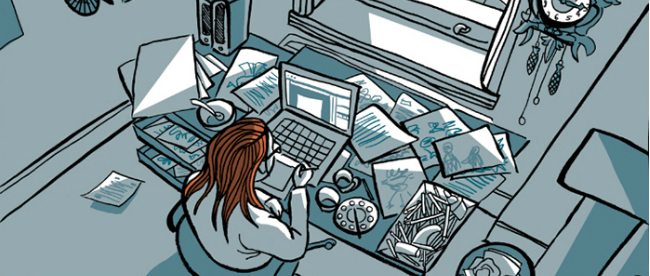 One of the UK’s most passionate exponents of the possibilities of the comics form, graphic novelist Karrie Fransman is no stranger to the Broken Frontier audience. Her debut GN The House That Groaned was nominated in Best Graphic Novel category in our 2012 Awards and last year Over Under Sideways Down – the comic she created for the Red Cross Refugee Week – won the 2014 Broken Frontier Best One-Shot Award.
One of the UK’s most passionate exponents of the possibilities of the comics form, graphic novelist Karrie Fransman is no stranger to the Broken Frontier audience. Her debut GN The House That Groaned was nominated in Best Graphic Novel category in our 2012 Awards and last year Over Under Sideways Down – the comic she created for the Red Cross Refugee Week – won the 2014 Broken Frontier Best One-Shot Award.
Fransman’s latest book Death of the Artist (recently reviewed here at BF) – a dark, sprawling, medium-jumping celebration of the medium told from multiple perspectives – is undoubtedly the most experimental book yet from a creator who has made pushing boundaries a signature feature of her work. Karrie and I talk today about her entry point into graphic novels, her early career, and the inspiration for The House That Groaned. She also speaks to me exclusively for the first time about the truth behind the twisting narrative structure of Death of the Artist…
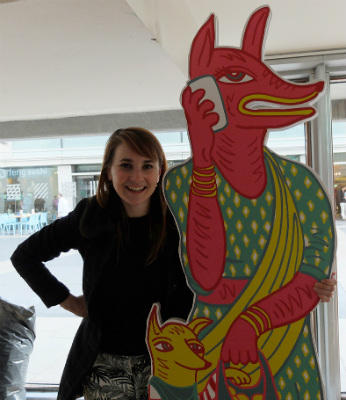 BROKEN FRONTIER: You came to comics perhaps a little later in life than many. Could you describe that moment of epiphany when you discovered the possibilities of sequential art?
BROKEN FRONTIER: You came to comics perhaps a little later in life than many. Could you describe that moment of epiphany when you discovered the possibilities of sequential art?
KARRIE FRANSMAN: I’d read lots of picture books and comics (which I didn’t acknowledge as comics) when I was younger – The Beano, comics about Greek mythology, etc. I used to draw stories all the time but I thought of them as static animations. I made the painful decision to not go to art college and instead studied Psychology and Sociology and forgot about my picture stories.
Then after university I watched Ghost World at the cinema, spotted the book in Waterstone’s, devoured it with greedy eyes and then called my sister immediately to tell her that I needed to start making these comicy things. And the rest is history.
Above right – Karrie Fransman at her recent Southbank Centre installation for Alchemy Festival where she designed a giant paper theatre Bangladeshi street scene in collaboration with Bangladeshi comic artists Syed Rashad Imam Tanmoy and Asifur Rahman, and set builder Andrew Lock. You can find out more about the project on her site here.
I’m sure Broken Frontier readers will be very aware of your books from our coverage over the years but for the uninitiated can you provide us with a potted history of your comics output to date?
Sure – I did a bunch of self-published comics from 2003 which I flogged at conventions like cabbages from wheelbarrows. My first professional gig was a weekly autobiographical comic strip called My Peculiar World with The Guardian [see below]. When that finished I started a 20-part weekly serialised comic for The Times. After that I published my first graphic novel The House That Groaned with Penguin Random House’s Square Peg in 2012.
Since then I’ve done a bunch of different work – reportage comics for newspapers, comic sculptures and digital comics for fun. This month I made an installation at the Southbank Centre with some amazing Bangladeshi comic artists and created a paper-cut ‘Selves Portrait’ comic for an exhibition with Manchester Art Gallery. And my newest book Death of the Artist has just come out with Jonathan Cape at Penguin Random House.
Some of your earliest published work in your Guardian strips was autobiographical in nature. How much of a sense of vulnerability is there about creating work that is directly personal and putting it out into the world?
Oh – a huge amount! In retrospect I was a little naive as I was plucked from obscurity to appear on the back pages of The Guardian and didn’t really consider the impact of autobiography. I’d always check with my family and friends if I put anything about them in my strips, but was less considered when writing about my childhood and gynaecologist appointments.
I got great feedback from all sorts of people from all walks of life – vicars, grannies, even a shaman healer. But once I found a blog where folk were bitching about me and realised people don’t always separate ‘fictional me’ from ‘real me’. That divide between reality and fiction is something I play with in my new graphic novel Death of the Artist where I embody five fictional artists to tell their stories. There are 5 versions of Karrie Fransman to grapple with which is fun.
Your first full-length graphic novel The House That Groaned (above) examined ideas of body image and perception through both a fascinating and sometimes grotesque cast of characters and your use of extended visual metaphor. Can you tell us a little about the themes you were looking to explore in that book?
I was pretty ill as a child and a brush with death left me with a life-long morbid fascination with mortality and bodies. As a young child living in Japan I’d love to visit graveyards and as an older child I kept bits of bodies in a Body Shop tub Jar (ear wax, hair, tears, blood and my little brother’s entire finger nail). I studied Psychology and Sociology at university and was really interested in corporal studies – looking at how people experience their own physicality in Western society – sexuality, mortality, diets and gender all fascinated me.
So I wrote The House That Groaned as a way of exploring our anxieties with our bodies. The fact that we want to shape them or make them live forever. The fact that we’re often scared of them. There are a host of weird and wonderful characters in this book who embody those ideas- from Brian ‘The Diseaseophile’ who is only attracted to women who are ill or dying to a grandmother who literally blends into the background.
Above – Karrie’s TedX talk on why we should be taking comics more seriously
Whenever I’ve reviewed your work at Broken Frontier I’ve always made mention of your intuitive understanding of the unique possibilities of the form. Indeed, if comics are a storytelling language in and of themselves then your work is positively multilingual. What is it about this medium’s narrative opportunities that most excites you as a creator?
Lovely of you to say! I think what excites me the most about the medium is how young and open it is. Unlike cinema, photography or fine art, comics are still being defined. And it’s a medium which is open for any of us to define it. There are very few barriers to entry when it comes to comics – you don’t need money to make them or any formal education. We’ve still not seen mosaic comics, virtual reality comics, comics you can walk through. I experimented with photography comics in my new book Death of the Artist and found only a few successful examples to refer to. There are still so many untapped opportunities to play with the medium!
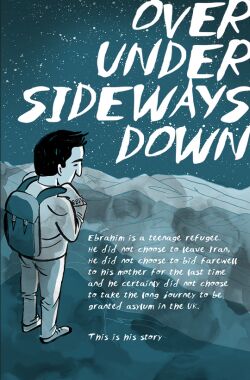 Last year you worked on the comic Over Under Sideways Down – the true tale of teenager Ebrahim, forced to flee from Iran and make a long, arduous journey to a new life in the UK – which was published by the Red Cross for Refugee Week. How did you become involved with that project?
Last year you worked on the comic Over Under Sideways Down – the true tale of teenager Ebrahim, forced to flee from Iran and make a long, arduous journey to a new life in the UK – which was published by the Red Cross for Refugee Week. How did you become involved with that project?
It was an amazing project to be involved with and all came about because a lady called Rosie at the British Red Cross realised that they could use comics to spread the stories of child refugees to a new audience in a new way. She went into Gosh to ask for some recommendations and I was lucky enough to be chosen.
Was there a particular sense of trepidation about the responsibility of bringing Ebrahim’s story to the comics page in Over Under Sideways Down?
It was one of the most difficult projects I’ve ever done as I felt the weight of Ebrahim’s story on my shoulders. This was his life and he hadn’t seen his mother for 5 years since he left Iran. It was heartbreaking to draw, but the Red Cross was very careful about making sure Ebrahim was supported every step of the way.
One of the most surprising things about the story was how difficult the asylum process in the UK was – Ebrahim felt it was almost worse than his dangerous journey being trafficked to the UK. The constant threat of being deported and having to prove every element of his identity from humiliating medical exams to prove his age to being treated like a criminal in court cases. I really hope this comic has changed people’s views on refugees, but you can read it and decide for yourself here.
Sample art from Death of the Artist by “Manuel Rangan”
What hints can you give us as to what you have planned for your contribution to our recently successfully Kickstarter-funded Broken Frontier anthology?
I’m so excited to see this has been successfully funded! It will be an epic anthology. My latest book explores the potential of the comic mediums by telling one story through many different mediums. I’d like to do a similar story which starts on the page in the realm of traditional comics and then moves off the page into different mediums. I hope to ‘break frontiers’ with the medium I use.
Another spread from Death of the Artist by photographer “Helena Harvey-Pollena”
Your most recent graphic novel is Death of the Artist, published last month by Jonathan Cape. Could you give us an idea of the basic premise of this intriguing approach to the idea of the comics anthology and the wider cast of contributors involved?
Death of the Artist is hands down my most ambitious comic to date. The idea was born several years ago in the basement of comic shop Gosh where I was chatting to the fantastic comic artist Mike Medaglia. He was saying how he had been drawing a lot of submissions for anthologies as they let him experiment with different styles and shorter stories.
I agreed and suddenly a light bulb went off in my head. I thought: ‘wouldn’t it be wonderful to create a comic anthology which looks like it’s written by many different artists but is, in fact all written by me? Drawing in different styles and seeing the world through different artist’s eyes’? The idea for Death of the Artist was born.
More Death of the Artist visuals – this time by “Vincent Abiss”…
It is the story of myself and four old friends from university who reunite after 10 years to visit an isolated cottage on the misty moors of the Peak District to spend a hedonistic week creating an anthology of comics. As the week unfolds tragedy occurs. One story runs through the book as seen through the eyes of the different characters and their tragic tale is told across watercolours, digital art, photography, collage and illustration. It’s a love letter to the wonderful possibilities of visual storytelling and experiments with the very form of the graphic novel.
Given that Death of the Artist is a wild tour through interconnected shorts all working in those very different media and styles, and yet intrinsically interlinked, was one of the intentions behind it to create a celebratory showcase for everything that comics can be?
Yes! I was playing with different mediums, comic styles, page layouts and narratives and playing with all the potential of the medium. I wanted to create a book which made me a better artist by the time I had finished it. I always love visiting comic conventions picking up small press comics and briefly seeing the world through someone else’s eyes. It was great fun to try and draw as a different character. What does the way someone draws comics tell us about them?
It’s a notably multilayered work exploring themes of the demise of individual creativity as we grow older and the intangibility of our dreams and aspirations. In that regard the book has elicited wildly different reactions from reviewers. Is there actually something quite satisfying about the very diverse connections people have made with the characters and the narrative?
The real ‘art’ is what goes on between the book and the readers and it’s great to sit back and see the reaction. Death of the Artist elicits a very different response from reviewers depending on if they read it as reality or fiction. There is a very strong tradition in comics of fantasy and also autobiography but this book does not slot easily into these genres. I wanted to create a mythology around the book. There is no mention of it all being written by me on the book and it is credited to ‘Karrie Fransman and Friends’ on the cover. None of the characters in the book are reliable narrators but interestingly many people have not questioned the reality of the book. But multiple narrative voices are so common in literature from Chaucer’s Canterbury Tales to Virginia Woolf.
And, finally, what can we expect to see from Karrie Fransman through the rest of 2015 both inside and outside of the world of comics?
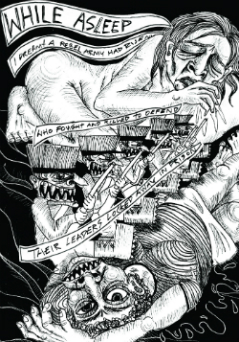 Well inside the world of comics… my ‘Selves Portrait‘ is still up at the Manchester Art Gallery ‘Artists in the Frame’ exhibition until the end of August (alongside some amazing self-portraits from the National Portrait Gallery – including other visual storytellers like Grayson Perry and William Hogarth). I will be touring various comic and literary festivals talking about Death of the Artist (Hay Festival, Edinburgh Book festival, Glasgow Comic Con, Latitude etc).
Well inside the world of comics… my ‘Selves Portrait‘ is still up at the Manchester Art Gallery ‘Artists in the Frame’ exhibition until the end of August (alongside some amazing self-portraits from the National Portrait Gallery – including other visual storytellers like Grayson Perry and William Hogarth). I will be touring various comic and literary festivals talking about Death of the Artist (Hay Festival, Edinburgh Book festival, Glasgow Comic Con, Latitude etc).
I am running a Guardian Masterclass on creating successful graphic novels on 21st July [full details here]. I’m also in the wonderful Keara Stewart’s Dream Anthology A Bit of Undigested Potato [image right – recently reviewed here at Broken Frontier and available to order online here] and I’m looking forward to getting on with my Broken Frontier anthology pages.
And outside the world of comics? … most likely eating pancakes and watching god-awful TV.
For more on Karrie’s work visit her website here. You can also follow her on Twitter here. Death of the Artist is published by Jonathan Cape priced £14.99.
You can follow Andy Oliver on Twitter here.





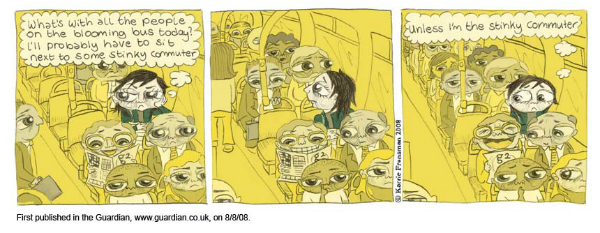
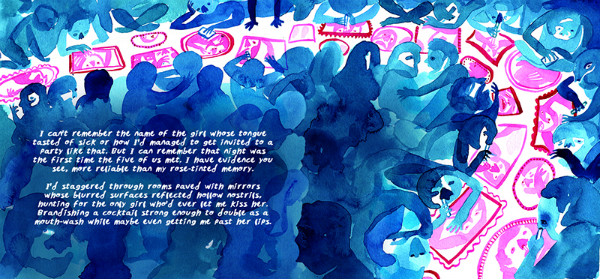
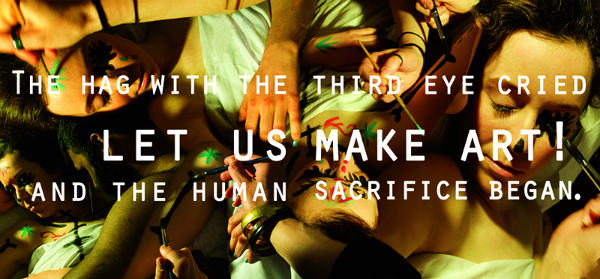
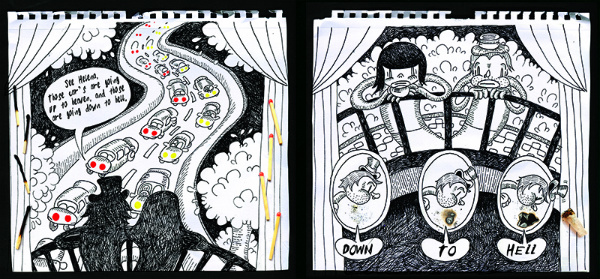
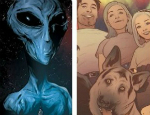
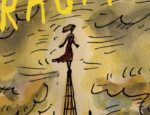
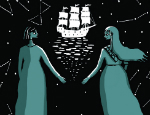
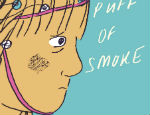
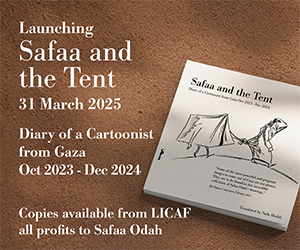
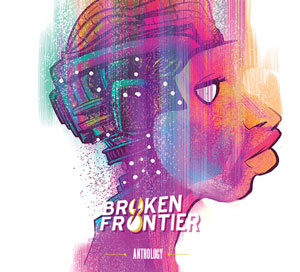
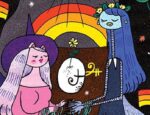
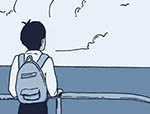
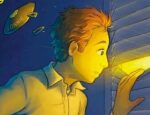
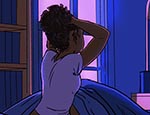
[…] always like to quote something that graphic novelist Karrie Fransman said to me in a 2015 interview here because I think it resonates in regards to that question: “I think what excites me the most […]